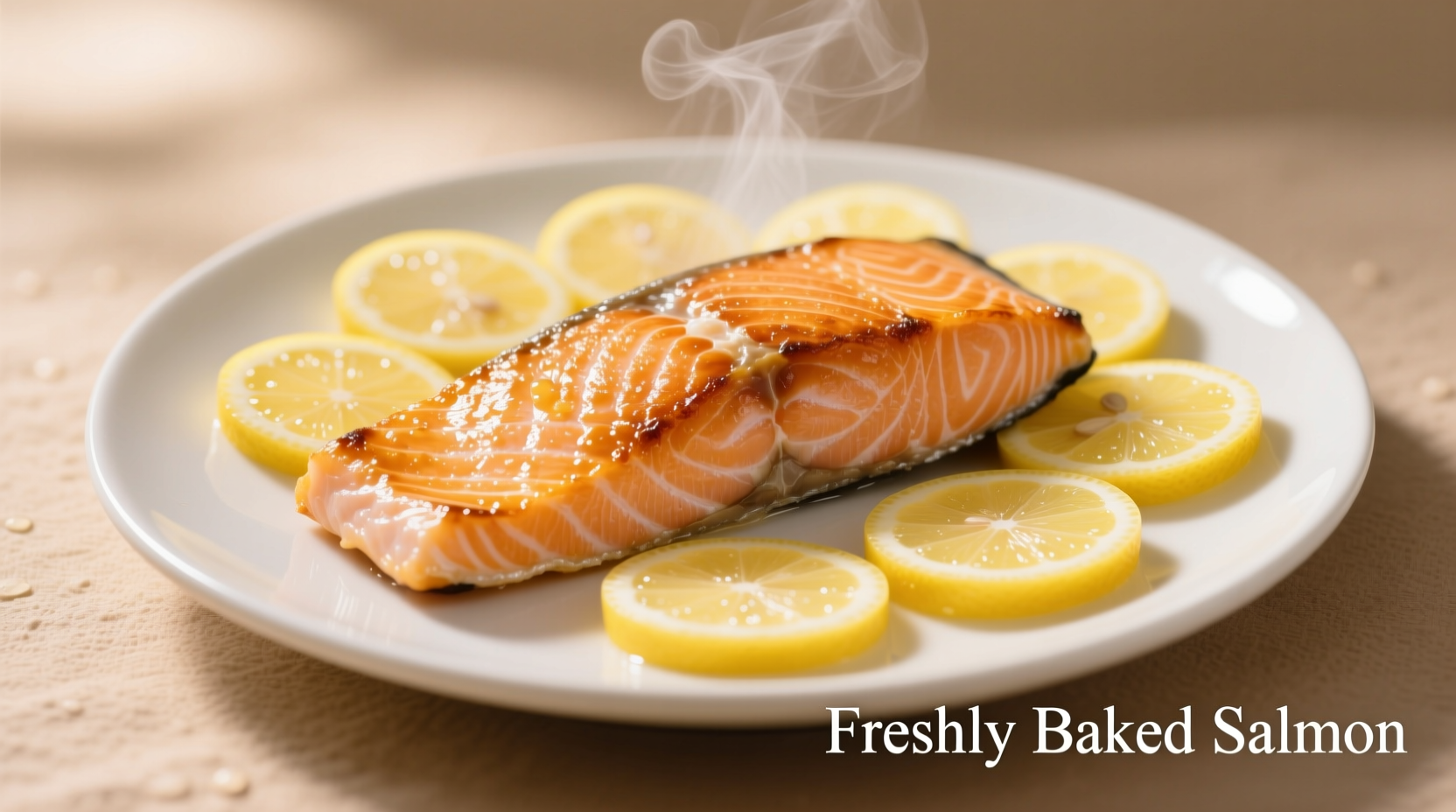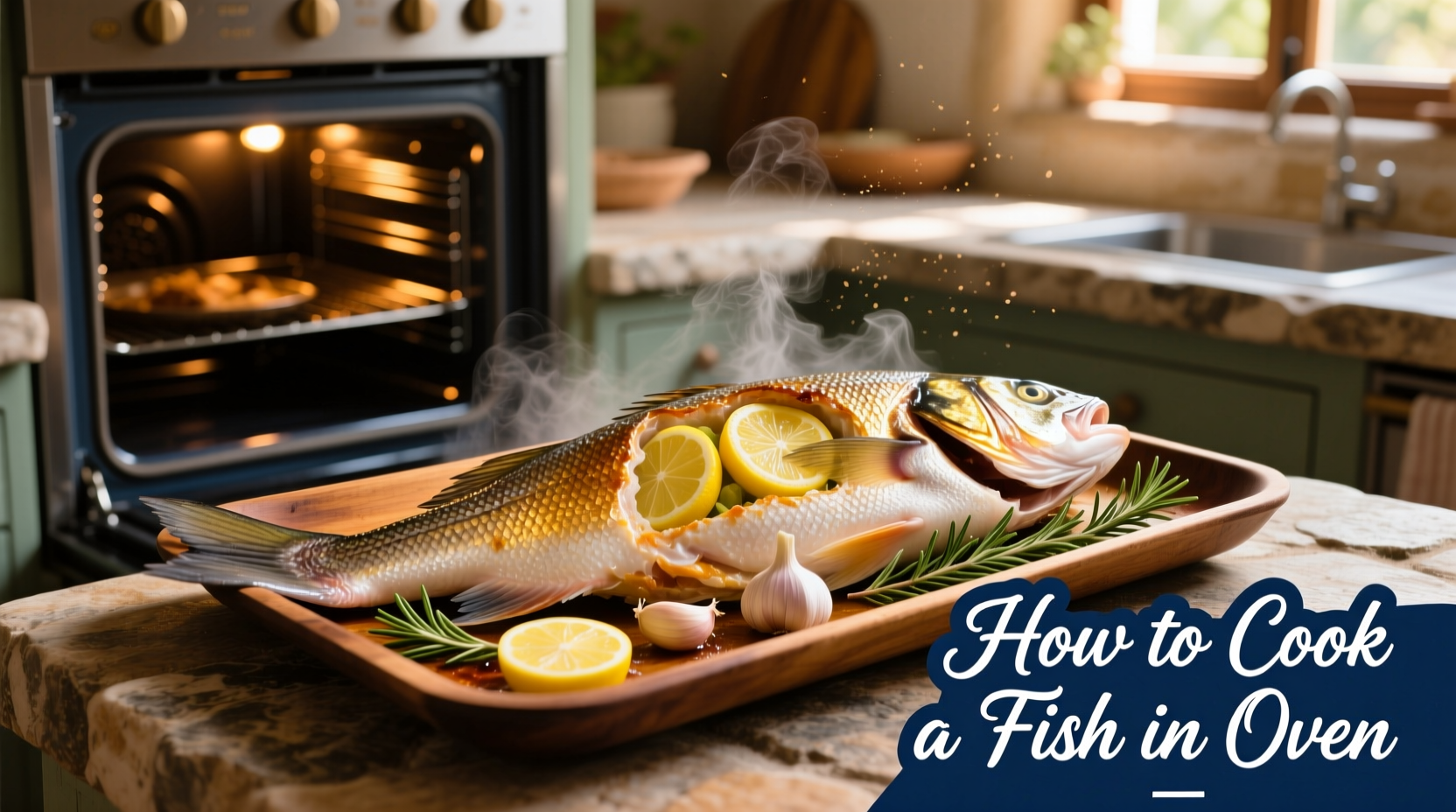The best way to cook fish in oven is to preheat to 400°F (200°C), season your fish fillet, place it on a parchment-lined baking sheet, and bake for 12-15 minutes until the internal temperature reaches 145°F (63°C) and the fish flakes easily with a fork. This simple method works for most white fish varieties like cod, halibut, and tilapia, delivering moist, flavorful results every time.
Why Oven-Baked Fish Belongs in Your Weekly Rotation
Mastering how to cook a fish in oven unlocks a world of healthy, flavorful meals with minimal effort. Unlike pan-frying that requires constant attention, oven-baking transforms fish into a hands-off, foolproof dinner solution. The dry heat of the oven gently cooks delicate fish fillets without drying them out, preserving moisture while creating beautifully flaky texture. This cooking method also eliminates splatter and油烟, making cleanup a breeze while maintaining all the nutritional benefits of fish - high-quality protein, omega-3 fatty acids, and essential vitamins.

Your Essential Pre-Cooking Checklist
Before you even preheat your oven, proper preparation ensures success when learning how to cook a fish in oven. Start by selecting fresh, high-quality fish - look for firm flesh, clear eyes (if whole), and a clean ocean scent without strong fishiness. Pat your fillets thoroughly dry with paper towels; this critical step creates the perfect surface for seasoning to adhere and prevents steaming instead of baking.
Seasoning properly makes the difference between bland and brilliant. Create a simple rub with olive oil, salt, pepper, and your choice of herbs. For Mediterranean flavors, try lemon zest, garlic, and dill. For something bolder, paprika and cumin add wonderful depth. Remember: underseasoning is the most common mistake when baking fish. The flesh needs proper seasoning to shine through.
Step-by-Step Guide to Perfect Oven-Baked Fish
Follow these precise steps for restaurant-quality results every time you cook a fish in oven:
- Preheat your oven to 400°F (200°C) - this high temperature ensures quick cooking that seals in moisture
- Prepare your baking surface with parchment paper or lightly oiled foil to prevent sticking
- Arrange fish fillets in a single layer with space between them for proper air circulation
- Add aromatics like lemon slices, fresh herbs, or garlic cloves around and on top of the fish
- Bake according to thickness - follow the 10-minute rule per inch of thickness
- Check for doneness by inserting a fork at the thickest part and gently twisting
Precise Temperature & Timing Guide for Different Fish
| Fish Type | Thickness | Recommended Temp | Cooking Time | Internal Temp |
|---|---|---|---|---|
| Cod/Tilapia | 1 inch | 400°F (200°C) | 12-15 minutes | 145°F (63°C) |
| Salmon | 1.5 inches | 375°F (190°C) | 15-18 minutes | 125°F (52°C) for medium |
| Halibut | 1 inch | 400°F (200°C) | 10-12 minutes | 145°F (63°C) |
| Whole Fish | 2-3 pounds | 375°F (190°C) | 25-30 minutes | 145°F (63°C) |
This cooking time chart follows USDA Food Safety and Inspection Service guidelines, which recommend cooking fish to a minimum internal temperature of 145°F (63°C) or until the flesh is opaque and flakes easily with a fork. USDA guidelines emphasize that proper temperature ensures food safety while maintaining quality.
Pro Techniques for Flawless Results Every Time
When you cook a fish in oven, these professional techniques transform good results into exceptional ones:
- Use a baking rack - Elevating fish on a rack allows heat to circulate completely, preventing soggy bottoms
- Oil the parchment - A light coating prevents sticking better than plain parchment alone
- Add moisture barrier - For thicker cuts, top with tomato slices or citrus to create a steam barrier that prevents drying
- Rest before serving - Let fish rest 3-5 minutes after baking for more even moisture distribution
- Finish with acid - A squeeze of fresh lemon or vinegar right before serving brightens flavors dramatically
Troubleshooting Common Oven-Baked Fish Problems
Even experienced cooks encounter issues when learning how to cook a fish in oven. Here's how to fix them:
Dry or overcooked fish: This usually happens from incorrect timing or oven temperature. Always use an instant-read thermometer and remember that fish continues cooking after removal from oven. For thicker cuts, try lowering oven temperature to 375°F and extending time slightly.
Fish sticks to pan: Ensure your baking surface is properly prepared with parchment or well-oiled foil. Never try to flip too early - fish releases naturally when properly seared. If stuck, gently loosen with a thin spatula after 5 minutes of baking.
Bland flavor: Underseasoning is the culprit. Salt fish generously 15 minutes before cooking to allow penetration. Consider a flavorful marinade for 30 minutes (but never acidic marinades for more than 1 hour as they can 'cook' the fish).
Perfect Pairings for Your Oven-Baked Fish
The beauty of knowing how to cook a fish in oven is how effortlessly it integrates into complete meals. Pair your perfectly baked fish with:
- Citrus-herb quinoa - Absorbs pan juices while adding protein
- Roasted asparagus - Cook alongside fish at same temperature
- Tomato-caper relish - Adds bright acidity that cuts through richness
- Garlic sautéed spinach - Quick side that complements delicate fish
For meal planning efficiency, prepare your sides while the oven preheats. This time-saving approach makes oven-baked fish one of the most efficient weeknight dinner solutions.
Advanced Variations to Elevate Your Fish
Once you've mastered the basic technique for how to cook a fish in oven, experiment with these chef-approved variations:
En Papillote (Parchment Packet): Seal fish with vegetables and herbs in parchment for a steamed-bake hybrid. The trapped steam keeps fish incredibly moist while infusing flavors. Cook at 400°F for 15-18 minutes depending on thickness.
Crispy Skin Method: For fish with skin (like salmon), start skin-side down on a cold baking sheet, then place in preheated oven. The gradual heating renders fat for perfectly crispy skin without overcooking flesh.
Brine for Extra Moisture: For lean fish like cod, a 10-minute brine (1/4 cup salt dissolved in 4 cups water) before baking enhances moisture retention and flavor penetration.
When Oven-Baking Isn't the Best Method
While oven-baking works beautifully for most fish, certain scenarios call for alternative approaches:
- Very thin fillets (under 1/2 inch) - Cook too quickly in oven; better suited for pan-searing
- Fish with high fat content - Like mackerel, which benefits from grilling's direct heat
- Delicate fish like sole - May fall apart during oven transfer; poaching preserves integrity
- When immediate cooking is needed - Oven preheating delay makes stovetop faster for last-minute meals
Understanding these context boundaries helps you make informed decisions about when to use oven-baking versus other cooking methods for optimal results.
Make Oven-Baked Fish Your Weeknight Hero
Mastering how to cook a fish in oven transforms weeknight dinners with minimal effort and maximum reward. This technique delivers healthy, flavorful meals that impress without stress. By following precise temperature guidelines, proper preparation techniques, and understanding the science behind oven cooking, you'll consistently create restaurant-quality fish at home. The beauty of this method lies in its versatility - from simple weeknight dinners to elegant company fare, oven-baked fish adapts to any occasion. Start with these fundamentals, then experiment with flavors and techniques to make this cooking method uniquely your own.











 浙公网安备
33010002000092号
浙公网安备
33010002000092号 浙B2-20120091-4
浙B2-20120091-4